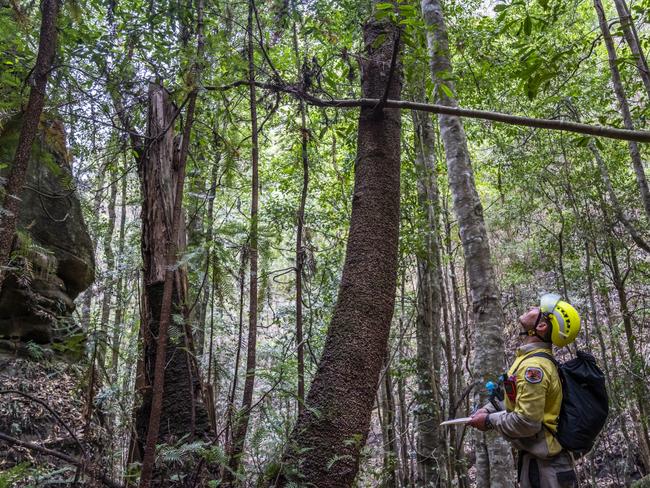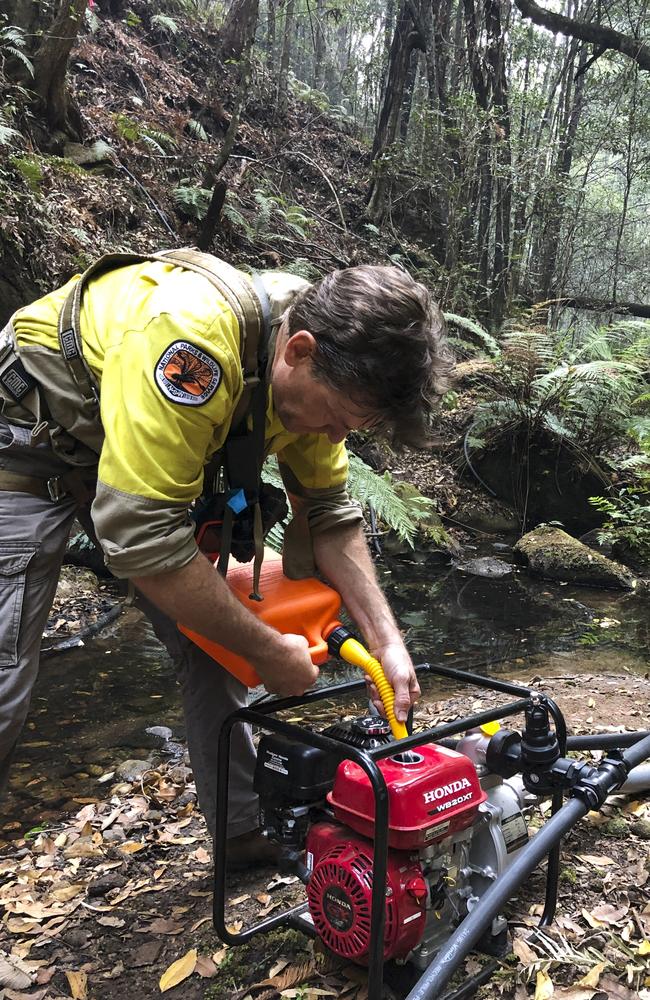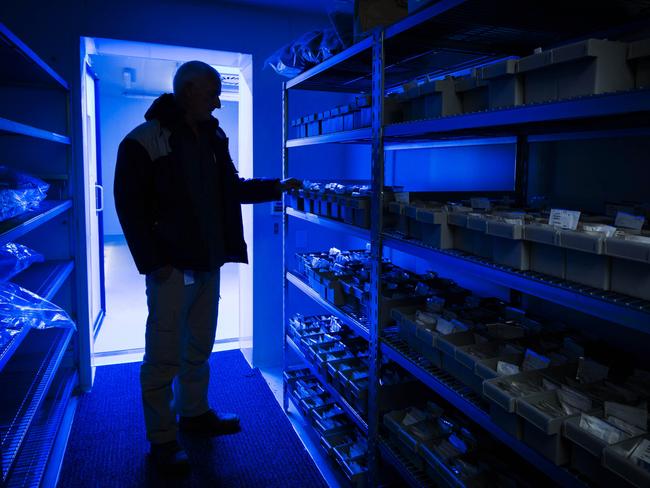PlantBank is preserving the seeds of hundreds of threatened species so they can survive bushfires
After Australia came close to losing its extremely rare Wollemi pines, scientists are in a race against time to save hundreds of other threatened species across the country.
Conservation
Don't miss out on the headlines from Conservation. Followed categories will be added to My News.
Scientists are racing against time to collect seeds from rare native plant species ahead of the next potentially calamitous bushfire season.
During the “Black Summer,” heroic efforts were needed to prevent bushfires burning through the secret 2km square area that’s home to the last remaining Wollemi pines. Fewer than 100 of these Jurassic-era trees, which were only discovered in 1994, survive in the wild.
But Dr Brett Summerell, Chief Botanist with Sydney’s Royal Botanic Gardens, said there were several plant species with even smaller numbers than the Wollemi pines that were facing even greater threats.
And for some, it may already be too late.

“It’s still very early to say, but there are pretty good indications that some species have had at least 90 per cent or more of their range burnt out, so it’s a waiting game to see what happens,” Dr Summerell said.
A spokesperson for the Federal Department of Agriculture, Water and the Environment said 471 plant species had been identified for “urgent intervention” in the wake of the 2019-20 bushfires, some of which were already endangered.
While the eucalypt forests that burned over summer were now “springing back to life”, Dr Summerell said, it could be decades before some tropical rainforests and alpine forests recovered.
One species that was in the path of last summer’s infernos was the swamp gum, which may now only survive because thousands of its seeds had been stored in PlantBank, Australia’s own version of the ‘doomsday vault’ in the Arctic Circle.

The facility at Mt Annan in Sydney’s southwest currently holds seeds for almost one quarter of the plant species listed on the Environment Protection and Biodiversity Act.
Its aim is to store and study viable seeds or live tissue specimens for all 25,000 plant species across Australia.
“We’ve got a really good collection of (swamp gum) seeds, they’re safely in the plant bank,” Dr Summerell said. “Fortunately with eucalypt seeds they last for a really long time. We know we’ve got the insurance population in the seed bank; what we need to do is monitor the population at the site, to see if it is able to recover after being burnt.”

The PlantBank team’s priority leading into the coming bushfire season will be to collect seeds from plants in regions that did not burn last summer, as they will be at greater risk.
The recent quarterly bushfire outlook rated parts of the NSW south coast and Victoria’s Gippsland, as well as the Kimberely region in WA as having above average fire potential this coming season, while parts of Queensland could be susceptible to grassfires. Most parts of the country were expected to have average bushfire potential.


The four small groves of Wollemi pines in NSW got “a little bit scorched” by the Black Summer fires and would need to be closely monitored, Dr Sumerell said, but the trees themselves “turned out to be reasonably resilient”.
A spokesperson for NSW Parks and Wildlife said as the area with the Wollemi pines burnt this year, the risk of it burning again was considered “very low” for the next three or four years.
The NPWS was protecting unburnt fire ground areas through more fencing and weeding, and its “biggest ever pest management program,” the spokesperson said.
Dr Summerell said it was always a challenge to engage people’s interest in plants rather than wildlife. The Wollemi pine was a rare example of a “charismatic species” in the plant world, he said.

“It’s always easier to get people concerned about the furries and the feathers,” he said. “There is something about two eyes looking back at you that hits the emotions much better. There is a thing called plant blindness, where people tend to see an ecosystem, and they see this green wallpaper at the back and the charismatic animal at the front.
“But of course if you don’t have the green wallpaper, the vegetation, then none of those animals can exist and survive.”
PlantBank will be included as part of the program for the Sydney science Trail, starting on Saturday, organised jointly by the Royal Botanic Garden Sydney and the Australian Museum. See www.sydneysciencetrail.net.au for details.

